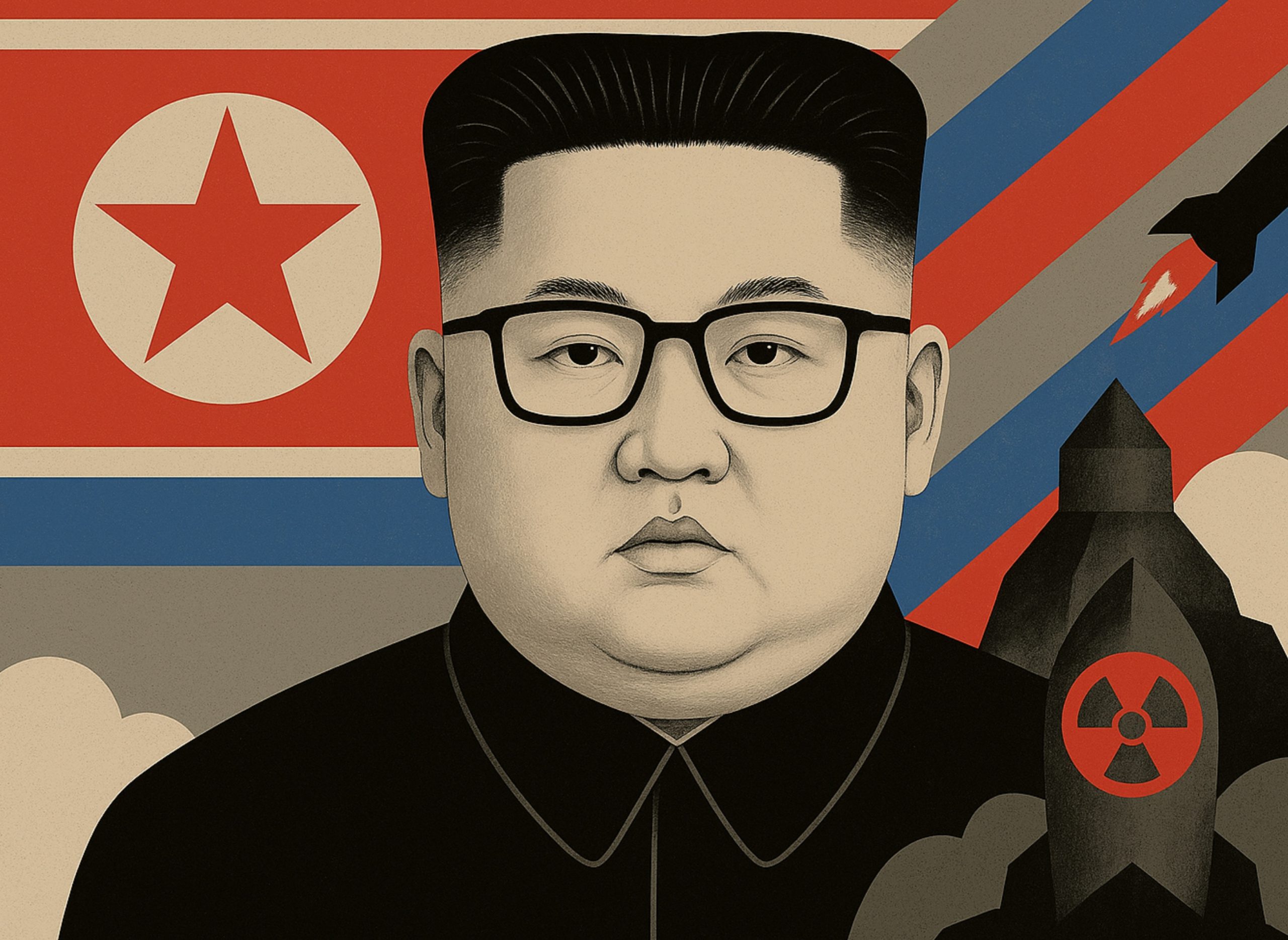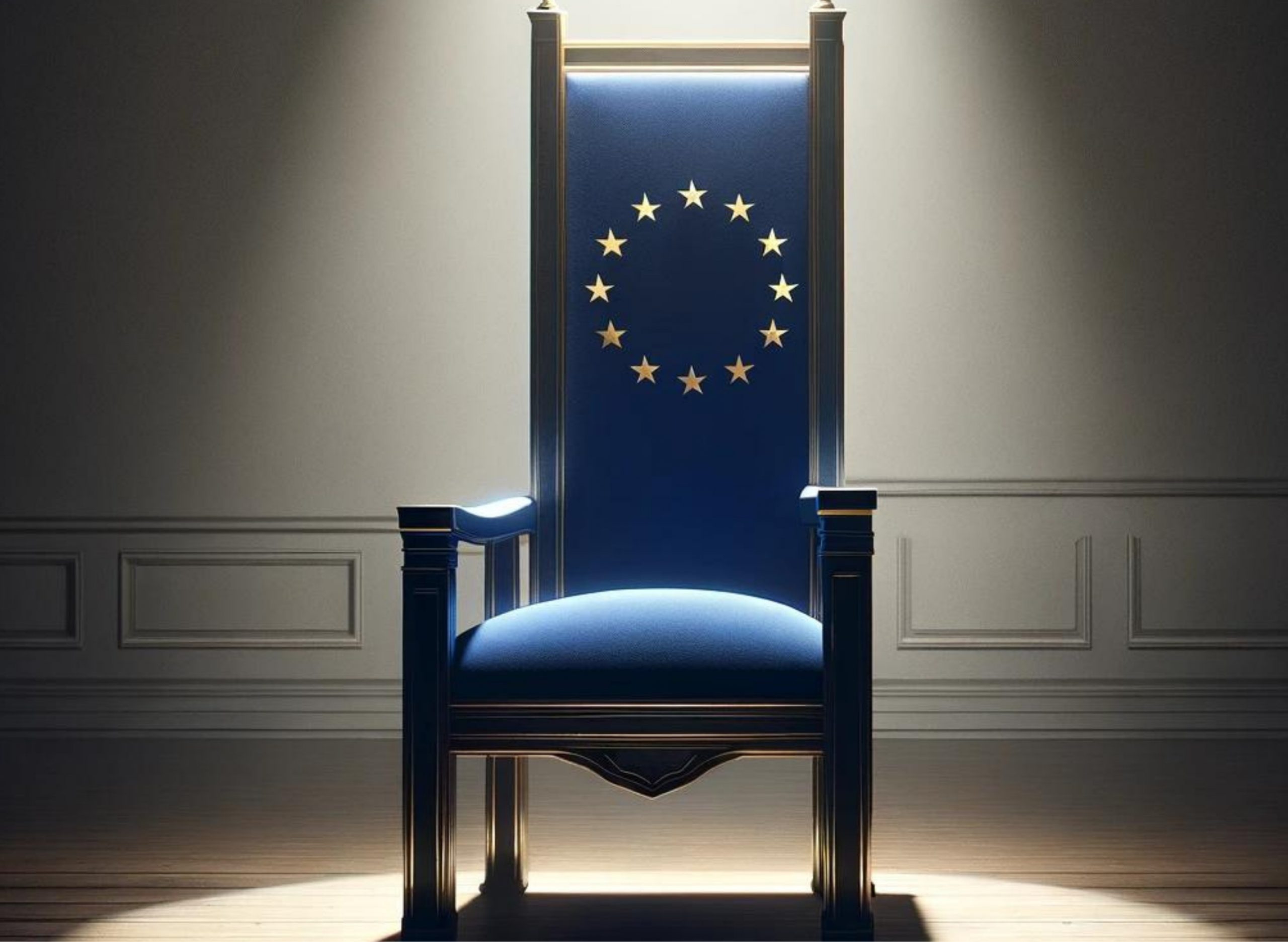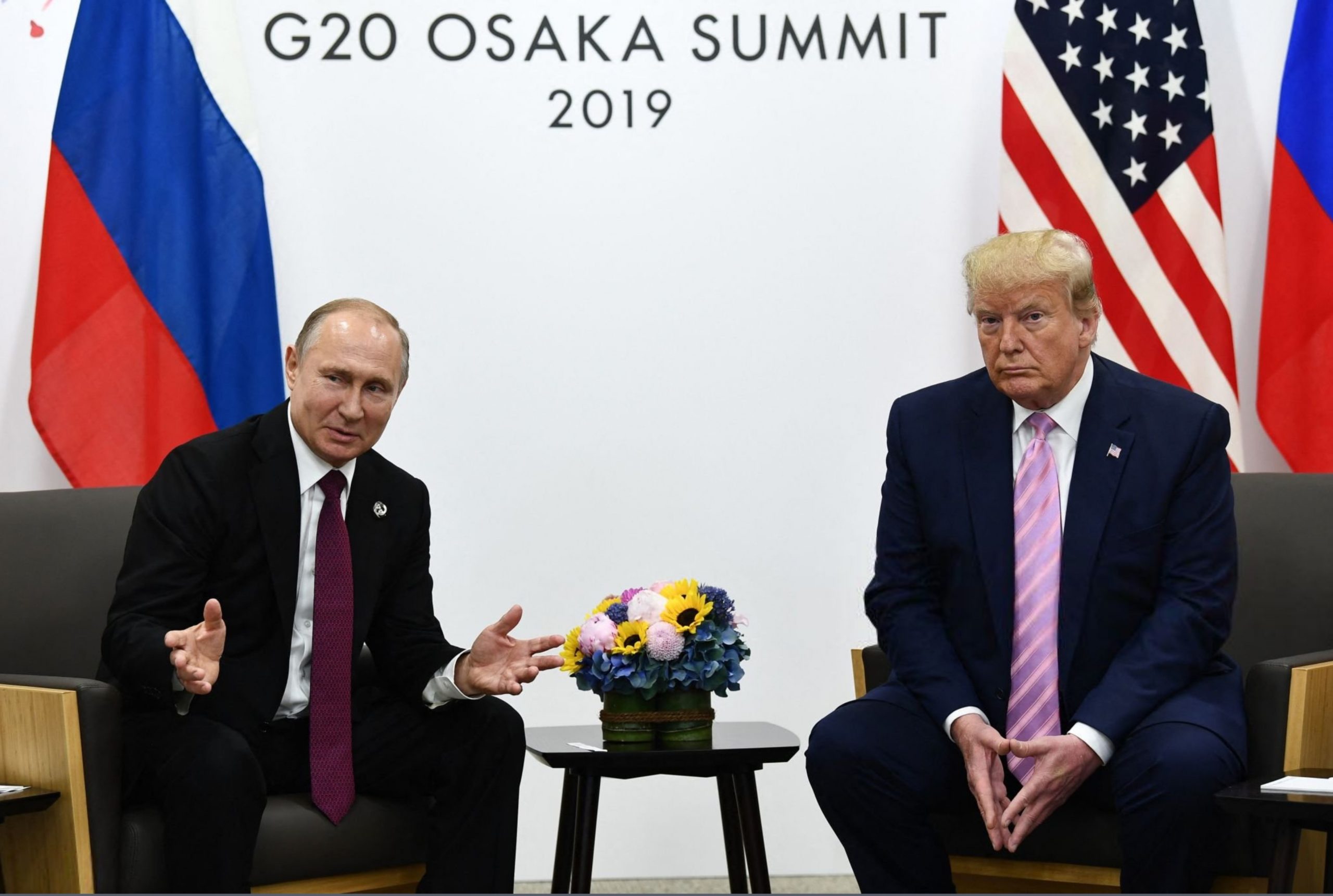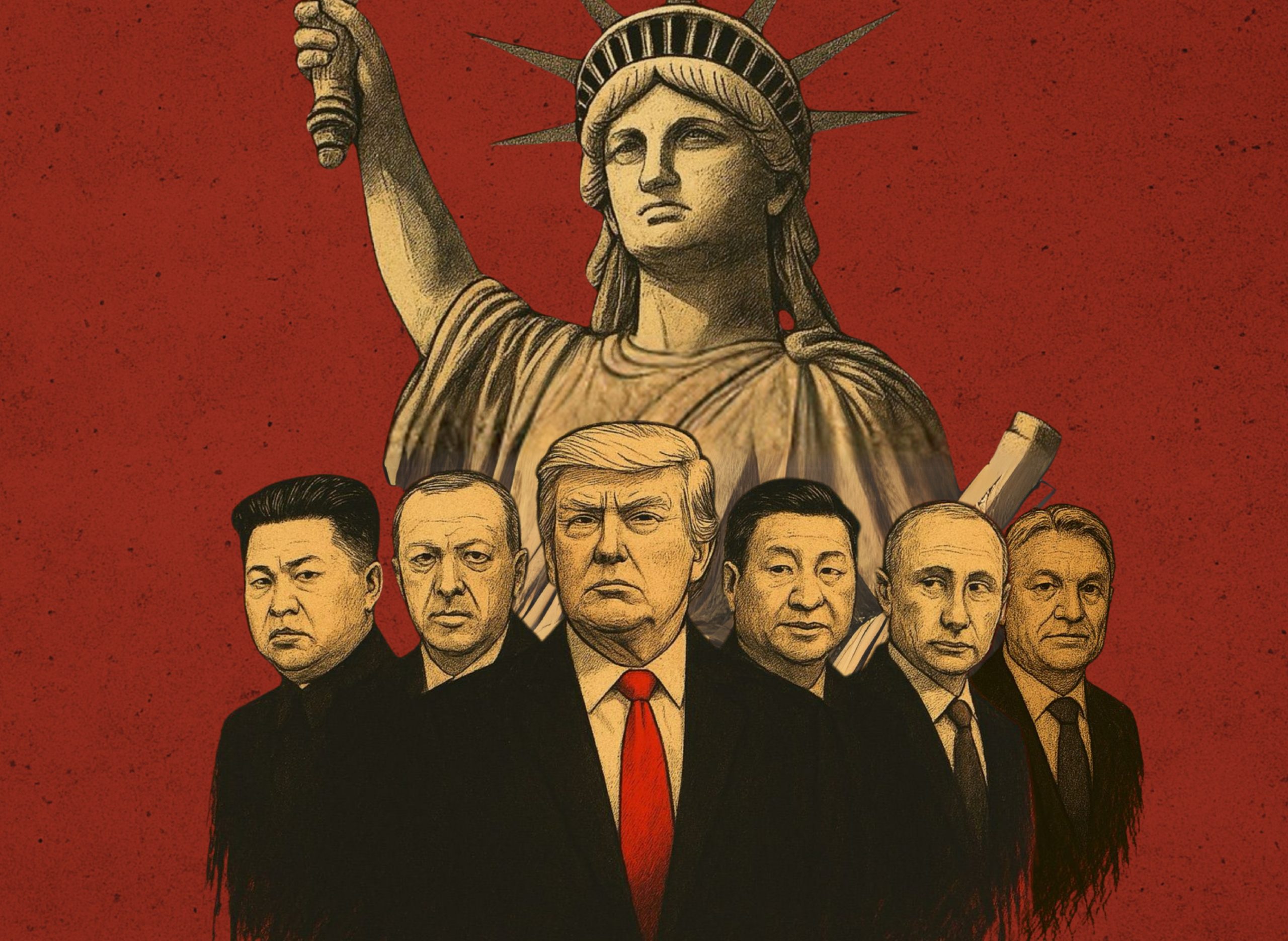
Kim Dynasty Eternal
Inside the World’s Most Enduring Dictatorship
By | Sean Huy Vu,
SEPTEMBER 03, 2025
The 2025 Online Edition
When Korea achieved liberation from imperial Japan in August 1945, few Koreans likely imagined their country would become two disparate states in the ensuing decades. In the wake of the Soviet Union’s collapse, even fewer policymakers in Washington believed the Democratic People’s Republic of Korea would survive into the 21st century. Yet, seemingly against all odds, the DPRK has withstood the test of time and persevered under a third generation of leadership. Kim Jong Un has resisted integration into the liberal international order and successfully maintained an authoritarian model many observers once regarded as obsolete. While the DPRK may appear to be a case of sui generis, upon closer inspection its tactics are not unique.
Far from being an anomaly, North Korea is a prime example of authoritarian governance, employing universal methods for internal domination and external control for the modern world. It combines effective propaganda, nuclear brinkmanship, and selective diplomacy in order to maintain its survival. Bordering only South Korea, Russia, and China, and constrained by international sanctions, North Korea faces severe economic isolation that presents challenges to its nuclear program and survival. However, it still manages to resist the rules-based order and convert its position of isolation into one of strength, making itself an information “black box” and the “hardest of hard targets,” stumping policymakers for generations.
Legacy and Legitimacy
North Korea’s most effective method of internal domination is the Kim family’s personality cult. While many authoritarian regimes, past and present, have produced their own, the Kim family’s cult stands in contrast to others for its intensity and extensiveness in daily life. The cult is maintained by indoctrinating the population with certain myths and rituals, strict censorship and regulation of media, and aggressive repression of freedom of thought. The central figure in North Korea’s national myth is Kim Il Sung, the country’s founding leader. Born into a devout Protestant family in 1912 in Pyongyang, he spent most of his formative years in Manchuria, fighting for anti-Japanese guerrilla units organized by the Chinese Communist Party.
North Koreans are taught to regard him not merely as a hero, but as a messiah who sacrificed himself for the salvation of the Korean nation. He was also, according to the orthodoxy, a genius theoretician who made a unique contribution to communist discourse: Juche, roughly meaning national self-reliance, a cardinal doctrine in North Korean domestic and foreign policy to this day. Kim Il Sung ruled North Korea from the country’s founding during Soviet occupation in 1948, through the Korean War (1950–53), and until his death in 1994. Through the late 1950s to 1960s, he consolidated his power by purging political rivals he regarded as too sympathetic with the Chinese, Soviets, or South Korean left.
His younger brother Kim Yong Ju and his son, Kim Jong Il, also made essential contributions to the family’s cult. Kim Yong Ju created the “Ten Principles of the Monolithic Ideology,” the most sacred set of state doctrines which regulate and shape the thoughts and activities of North Korean citizens. Kim Jong Il, during his tenure as chair of the Korean Workers’ Party’s Propaganda Department from the 1960s to the early 70s, indulged in his passion for cinema by personally directing films and commissioning statues, novels, songs, and monumental architecture in honor of his father. Military parades and mass spectacles were also orchestrated on important national holidays, especially the elder Kim’s birthday—April 15, “the Day of the Sun.” While North Koreans may harbor ambiguous or even contemptuous feelings towards Kim Jong Il or Kim Jong Un, Kim Il Sung was a genuinely beloved charismatic leader for his perceived fatherly care and protection of the motherland.
Propaganda and mass performances not only inspire exaltation for the leaders but also reinforce the group mentality amongst a population. The most effective propaganda is implicit and resonates with certain social psychological foundations: the need to believe, the need to belong, and the feeling of contributing to something larger than oneself and which outlives them, such as one’s race or country. North Koreans possess a strong sense of ethnic nationalism for one another, including their southern brethren. Even if North Koreans have mixed feelings about their leaders, the Kims are nonetheless the symbol of their community and would stop at nothing to protect their nation and each other. This is where the true strengths of the propaganda and personality cult lie, and it is against the mythical legacy of his family that Kim Jong Un has cultivated some of his legitimacy and exerts influence over his people.
Dictatorship, Third Generation
At the time of Kim Jong Il’s death in December 2011, Kim Jong Un’s transition to power was incomplete yet adequate enough to secure his family a third generation of dictatorship. Before his father’s passing, Jong Un’s leadership was hinted at a few years in advance, whether through songs implying that the successor would follow in the General’s “Footsteps” or by receiving high-level promotions within the party and military. State media also incidentally touted the younger Kim as a pious son of “The Respected Mother,” Ko Yong-hui, one of Kim Jong Il’s many private mistresses. While most of the propaganda techniques and institutions initiated under Il Sung and Jong Il continue today, Kim Jong Un has broken with the personality cult’s precedent on several fronts.
He founded an all-women band in 2012 called the Moranbong Band that exhibited extensive Western and Asian-pop influence. Although many songs have been composed for the Supreme Leader, not a single statue of Kim Jong Un has been constructed. In 2020, Kim did not pay his annual respects to his grandfather by visiting Kim Il Sung’s mausoleum on the “Day of the Sun.” Then in 2024, Kim contradicted his grandfather’s dying wish and reversed decades of state policy by declaring that the DPRK would no longer pursue unification with South Korea. Had any other individual made such a heretical pronouncement, they would have been sent to a gulag.
The most significant difference between Kim Jong Un’s cult and those of his predecessors is the scant amount of details about his childhood, the facts of which remain shrouded in mystery even to experts. Of what little is known, Kim and his younger sister Kim Yo-jong both enjoyed a privileged childhood, having studied in Bern for a few years, attended by cooks, bodyguards, chauffeurs, and private tutors. And despite being the offspring of the Dear Leader, Kim Jong Un and Kim Yo-jong were both kept in secrecy from the rest of North Korea, including their own family. They were children born out of wedlock and to a former dancer of mixed Korean and Japanese descent from the diaspora in Osaka, qualities unacceptable in the conservative hermit kingdom.
To this day, Kim Jong Un has not produced a single photo of himself with his grandfather, suggesting he and Kim Il Sung had little to no relationship. If ordinary North Koreans knew how much of a far cry Kim Jong Un’s childhood was from the austere, revolutionary martyrdom of Kim Il Sung, it would seriously undermine his credibility. Kim Jong Un has broken with tradition not only culturally but politically as well. When he assumed power, most of the country’s elite were adherents to the ideologies of Stalin, Mao, and Songun, or Kim Jong Il’s military-first policy. His aunt Kim Kyong-hui and his uncle-in-law Jang Song-thaek were also key members of his court, continuing their responsibilities where Kim Jong Il had placed them during his tenure.

In the succeeding years, Kim Jong Un would purge or demote hundreds of these officials, replacing them with a younger, more sycophantic generation of elites or chairwarmers. He famously executed Jang in December 2013, allegedly for corruption, then four years later assassinated his older half-brother Kim Jong-nam (a CIA informant) in Kuala Lumpur. Purges are routine during leadership transitions in North Korea, but it was unheard of for relatives of the sacred Paektu blood to be executed. While life at the elite level has always been one of constant vigilance and performance, during Kim’s early years, life in the middle and lower classes and outside Pyongyang was less restrictive.
Reforms allowed farmers to keep larger portions of their harvest for private use than before. Informal markets (jangmadang) and entrepreneurship quietly became more tolerated in exchange for rent to the state and to avoid famine. During this period, hard drives containing South Korean pop music and dramas were routinely shared amongst the population, despite the heavy fines. Gradually, Kim Jong Un became less tolerant of any potentially subversive thought, especially after the COVID-19 pandemic.
The border with China was tightened, then eventually sealed, to reduce the number of defections and the flow of foreign media into the country, the possession of which currently carries a death sentence. Traditional methods of surveillance, such as informants within neighborhoods and bi-weekly hour-long “life review” or self-criticism sessions, were strengthened. The country’s intranet persists well into the era of smart technology and nuclear proliferation, cutting off people’s access to outside information. North Korean phones, which are modified imports from China, also monitor user activity by recording login data and capturing screens every five minutes.
The Enemy as Narrative
For all the country’s repression and economic stagnation, the regime’s nuclear weapons program remains a popular symbol of national pride among North Koreans and is regarded as a necessary tool for survival due to the history of the Korean War. Although the Korean War is sometimes referred to as the “forgotten war” in the U.S., the collective memory of it is routinely reinforced in North Korea. The U.S. Air Force dropped 600,000 tons of bombs and 20,000 tons of napalm on the Korean peninsula, mostly on the North; a higher volume than what was dropped on Imperial Japan or Nazi Germany.
American B-29s destroyed nearly all of the DPRK’s civilian and military infrastructure, including hospitals, churches, temples, and schools. As napalm set villages ablaze in the night to drive out guerrilla units, irrigation dams were destroyed, inundating cities, roads, and rice paddies. The bombings forced North Koreans to retreat to an underground existence for nearly three years and left them on the brink of starvation until the arrival of Soviet aid and Chinese forces. Approximately 10% of the North’s population of 10 million died during the war. The North Korean propaganda apparatus has since embellished the war’s history with evocative myths and exaggerations, presenting a Manichean worldview between Koreans and Americans.
Purges are routine during leadership transitions in North Korea.
While Koreans are regarded as the victimized and oppressed race, Americans are framed as the genocidal, treacherous, and predatory oppressors responsible for a “hostile” foreign policy and international environment that isolates and impoverishes the North Korean people with sanctions and legal double standards. These attitudes and insecurities are held not only by much of the population but by the leadership itself. In the eyes of Pyongyang, Washington is an irredeemable and untrustworthy negotiator that seeks to ultimately undermine the regime to expand its hegemony in East Asia. Likewise, Americans find it difficult to accept North Korea as a reliable, good-faith nuclear actor due to its frequent verbal subterfuge at working-level talks and antagonism towards the liberal international order.
While the U.S. has demanded some variation of “complete, verifiable, and irreversible denuclearization,” this is simply not an option for Pyongyang. Demanding the authoritarian regime dismantle its only security guarantee in its power imbalance with the U.S. increases its perceived risk of facing the same fate as Libya, Iraq, or most recently, Iran. This is in spite of the fact that the U.S. has repeatedly offered security guarantees, food, and financial aid to the DPRK in exchange for suspension of its nuclear program for the past thirty years. However, the capricious nature of American democracy, which often prioritizes re-election, incentivizes short-term outcomes over long-term consistent strategy, and produces volatile changes in foreign policy, has also eroded trust between both sides.
Moscow’s New Ally
In January 2018, Kim Jong Un declared his country’s nuclear deterrent “complete” and vowed to discontinue nuclear weapons development. It came less than a year after the successful launch of the Hwasong-14, an intercontinental ballistic missile, on July 4, that demonstrated—for the first time—an altitude capable of hitting the U.S. mainland and its territories in the Pacific. What ensued, besides the “fire and fury” rhetoric, were a series of U.N. Security Council resolutions that completely cut off the regime from accessing hard currency and raw materials. These stringent sanctions received unusual support from Russia and the PRC and were initially effective.
Later that same year, Kim Jong Un made a number of historic overtures with South Korea and the U.S. He sent an orchestra and a delegation, including his sister, to the Pyeongchang Winter Olympics; signed several agreements with South Korean President Moon Jae-in moving towards peaceful reunification; and met President Trump in Singapore to agree to the “peaceful denuclearization of the Korean peninsula.” Although Kim’s outreach was more theatrical than substantive, a performance of dialogue and reconciliation was still better than none and excited audiences around the world.
As time passed, however, Kim Jong Un revealed his true intentions. In the succeeding months, Kim demonstrated his willingness to negotiate by deactivating the Yongbyon Reactor (the country’s first uranium enrichment site), suspending nuclear testing, and dismantling missile launch sites. U.S. negotiators remained unconvinced, as these moves appeared superficial and easily reversible. After the fallout between Kim and Trump at the 2019 Hanoi Summit, North Korea resumed its conventional missile testing. Although Trump and Kim briefly shook hands for a photo opportunity at the DMZ that summer, the DPRK has stonewalled all invitations by the U.S. to negotiate.
Kim Jong Un met Trump with the expectation that his country would formally be accepted as a nuclear state, only to be denied this acknowledgment from his country’s greatest adversary. North Korea’s strategic partnership with Russia has granted Kim Jong Un substantial leverage over the U.S. and has disincentivized him from negotiating any further. Since Moscow resumed its war with Ukraine in 2022, Pyongyang has been supplying its benefactor with an estimated 12,000 troops, multiple-launch rocket systems, long-range artillery, as well as ballistic missiles.
Reports estimate that millions of artillery rounds, shells, and rockets worth billions of U.S. dollars have been sent to Russia from North Korea via cargo train. In exchange, Russia has broken most, if not all, of the U.N. Security Council resolutions sanctioning North Korea for its nuclear program. Moscow is also believed to be sending food, energy, financial aid, as well as military technology to Pyongyang to aid its post-pandemic recovery. None of this is to mention the explicit outsourcing of labor by Chinese firms to North Korean workers, also contrary to U.N.S.C. resolutions, and the resurgence of trade between the two countries back to pre-pandemic levels.
Kim’s Survival Mode
Given the effectiveness of its totalitarian methods, its nuclear deterrent, and relations with traditional partners, the probability of the North Korean regime collapsing is as low as ever. For the foreseeable future, regime endurance is the most likely scenario, but this does not preclude other possibilities. Many experts have considered the possibility of a joint invasion of South Korea and Taiwan by the DPRK and PRC, respectively. The probability of this occurring imminently remains low, however, as it requires specific conditions to make it successful. The U.S. could find itself deterred from intervening in the region either by the threat of nuclear force from North Korea or China, by being consumed with its own contentious domestic politics, or by having its military and diplomatic resources spread too thin across the globe.
A second possibility lies in the collapse of U.S.-China relations, where Beijing might feel confident enough to sustain a self-reliant economy during wartime rather than one dependent on exports, and thus no longer see the need to maintain productive economic ties with South Korea, Japan, or the U.S. In such a scenario, if China and North Korea were to collaborate on a joint invasion of their respective rivals, Washington could either prove unwilling or unable to respond effectively, whether due to fears of nuclear confrontation or because of a turn toward isolationism. Finally, a weakened or divided South Korean government could create vulnerabilities that the North might exploit, coercing Seoul into concessions.
Millions of artillery rounds have been sent to Russia from North Korea via cargo train.
Yet, given the sophistication and superiority of South Korea’s defense systems, this last scenario remains the least concerning. A full-scale invasion of the South, while always possible, is still highly unlikely as there are too many conditions required for it to occur, and the robustness of the U.S.-ROK alliance serves as an effective deterrent against such action. Kim is a rational actor, and he knows that a failed attempt would be too costly for him and his regime. As Kim stated himself in 2024, he is no longer interested in unification with the South because his country is in survival mode. He is not interested in economic growth, which is why sanctions have failed to pressure the regime to change in a way that aligns with U.S. interests.
What is more likely in the coming decades is a series of provocations and skirmishes between the Koreas initiated by the North. The back-and-forth between both sides could escalate enough to motivate the South to initiate a violent reunification of the North. This would be even more likely if the Republic of Korea developed a domestic nuclear weapons program, had a highly nationalistic administration in the Blue House, and if American influence over the alliance was weak, as it is now with Israel. A similar case occurred in Vietnam during the Lê Dynasty (1627–1802). Although officially ruled by a single family, the kingdom was de facto governed by separate clans who sporadically engaged in civil war: the Trịnh and the Nguyễn. Northern Vietnam under the Trịnh maintained close ties almost exclusively with the Chinese Ming and Qing Dynasties, while the South (present-day Central Vietnam) engaged in substantial trade with the Portuguese, Dutch, Chinese, Japanese, and others.
With their growing wealth, advancements in military technology, and rich agricultural production, the Nguyễn managed to maintain large, powerful armies that expanded south into the Mekong Delta. The centuries of division and civil war were unilaterally resolved by the Nguyễn when they marched north and seized the ancient capital Hà Nội, establishing a new dynasty. If Vietnam’s history is compared with Israel’s current war on Gaza, it seems inevitable that the larger, wealthier, and more powerful half of a divided land eventually absorbs the weaker, smaller one by force.
Not Only an Asian Story
As vulnerable as the North Korean regime may be, it is a success story in totalitarian endurance. It has withstood the test of time through uncompromising repression of domestic dissent and the strategic use of nuclear weapons as bargaining chips in its rivalry with the U.S. and South Korea. But above all, the regime has survived through internal cultural hegemony. When citizens are taught their nation’s history, they are being taught more than a sequence of dates, figures, or events. They are inculcated in a narrative that promotes certain values, cultivates a national identity and community, and gives guidance to their lives. The story is rarely ever neutral because its ideas reflect and legitimize the ideology and privilege of those in power.
There is no clearer example of this approach than in North Korea. While it is not the only case of its kind, the DPRK’s method of cult-building and maintenance of authoritarian rule has inspired other Asian leaders to follow in its footsteps, from countries as distant as Cambodia and Turkmenistan, or as close as the PRC under Xi Jinping. But the consolidation of power through the manipulation of cultural mediums or an ethno-national mythos is far from unique to Asia or autocracies. In a world that is becoming increasingly nationalistic and protectionist, and where tribal political and religious tensions take place both online and in real life, all nations are at risk of being swept up by charismatic leaders who can effectively generate collective effervescence for destabilizing purposes.


